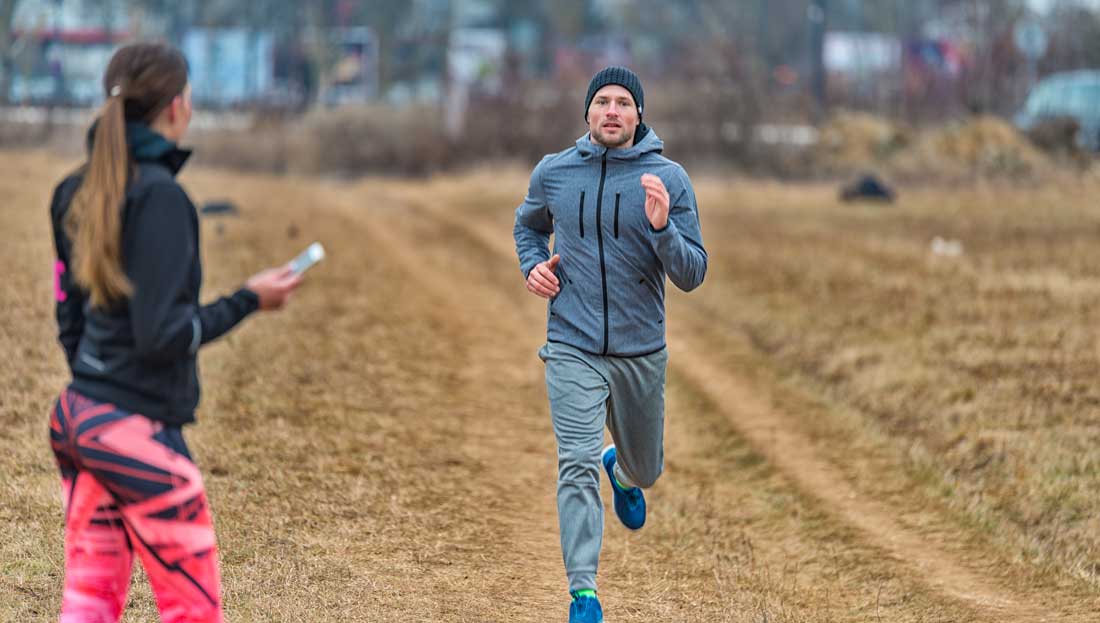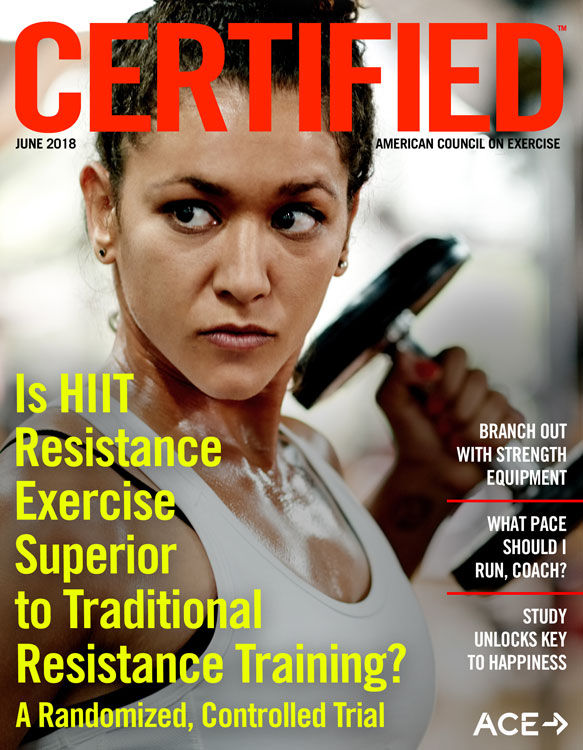
Running has never been more popular, and chances are you have clients who not only want to finish the races they enter, but want to finish them faster than the time before. As a health and exercise professional, you know what it takes to help your clients get stronger and healthier, but do you know how to help them get faster? Here's what you need to know to do just that.
Why Muscles Are Like Factories
When I was a kid, I loved watching the TV sitcom, I Love Lucy. There was a famous episode during which Lucy and her friend Ethel work on an assembly line at a candy factory, where they are assigned to wrap pieces of chocolate as they came down the conveyor belt. At first, the job is easy, but then the speed of the conveyor belt quickens. Lucy and Ethel are unable to wrap each piece of chocolate in time before the next piece is already passing by them, so they grab handfuls of chocolate and shove them into their pockets and mouths. Clearly, increasing the speed of the conveyor belt didn’t help them produce more wrapped chocolates for the company.
What does all this have to do with becoming a better distance runner? As it turns out, this scene actually reveals the secret to how to become a better distance runner.
Deep inside the body’s muscle fibers are tiny factories called mitochondria, and the workers—the Lucys and Ethels—are the enzymes that catalyze the chemical reactions involved in aerobic metabolism. When the factories are stressed because of greater demand, more and larger factories will be built to increase their supply to match the demand, much like more and larger factories would be built to keep up with an increasing demand for chocolates. The more mitochondria runners’ muscles have, the greater their muscles’ capacity to use oxygen and the faster pace they will be able to sustain.
One of the biggest mistakes runners make is thinking that to run faster in races, they need to run faster in workouts. So they run their workouts faster than their current fitness level dictates. I once coached a college runner who ran 19 minutes for 5K and she told me she wanted to be trained like a 17:30 5K runner. So I told her to run a 17:30 5K and then I’d train her like a 17:30 5K runner. Races, which tell runners their current level of fitness, should dictate the training speeds, not the other way around. Don’t tell your distance-running clients to practice running faster; rather, help them run to improve the physiological characteristics—to make more assembly lines—that will enable them to run faster in the future.
Urge your clients to try one or more of the following training approaches to significantly improve their pace on race day.
Easy Runs and Long Runs
The purpose of easy and long runs is to stimulate the physiological, biochemical and molecular adaptations needed for aerobic endurance, including the storage of more fuel (glycogen) in muscles, an increased use of intramuscular fat at the same speed to spare glycogen, an increased number of red blood cells and hemoglobin, a greater capillary network for a more rapid diffusion of oxygen into the muscles and, through the complex activation of gene expression, an increased mitochondrial density and number of aerobic enzymes to enhance aerobic metabolic capacity. The speed of easy runs is not as important as their duration. The single biggest mistake competitive runners make is running their easy runs too fast. By doing so, they add unnecessary stress to their legs without any extra benefit and they won’t be able to run as well on their harder workout days.
Instead, urge your clients to do easy runs at about 1½ to 2 minutes per mile slower than their current 5K race pace (about 70 to 75% maximum heart rate). As weekly mileage increases to more than 60 miles per week, runners may need to run even more slowly to handle the volume. I coached a 2:48 marathoner who slowed her easy runs down to a 10-minute pace as she reached 80 miles per week.
Acidosis Threshold Runs
The acidosis threshold (AT) demarcates the transition between running that is purely aerobic and running that includes significant oxygen-independent (anaerobic) metabolism and the development of acidosis. AT runs increase the speed at which AT occurs, which enables runners to run faster before anaerobic metabolism (and, thus, acidosis and fatigue) begins to play a significant role.
AT pace is about 10 to 15 seconds per mile slower than 5K race pace (or about 10K race pace; 75 to 80% max heart rate) for recreational runners and about 25 to 30 seconds per mile slower than 5K race pace (or about 15 to 20 seconds per mile slower than 10K race pace; 85 to 90% max heart rate) for talented and trained runners. The pace, which should be held continuously for 15 to 30 minutes or run as five- to 10-minute reps with short recovery intervals, should feel comfortably hard, at the upper end of being purely aerobic.
VO2max Intervals
VO2max is the maximum volume of oxygen that muscles can consume per minute and is determined, in part, by the heart’s ability to pump blood and oxygen. VO2max intervals, which increase VO2max by strengthening the heart to pump more blood with each beat, are run at the pace at which VO2max occurs, which corresponds to maximum heart rate. The pace, which should be maintained for three- to five-minute reps, is about 1- to 1.5-mile race pace for recreational runners and 2-mile race pace (10 to 15 seconds per mile faster than 5K race pace) for highly trained competitive runners.
Anaerobic Capacity Intervals
Anaerobic capacity refers to the ability to regenerate energy in the form of adenosine triphosphate, or ATP, through glycolysis. Runners train anaerobic capacity to get faster by recruiting fast-twitch muscle fibers, by increasing the number of enzymes involved in the glycolytic energy pathway, and by enhancing their acidosis buffering capacity. The speed of these workouts, which should be maintained for 30- to 90-second reps, should be just fast enough to cause acidosis and recruit fast-twitch muscle fibers—800-meter to mile race pace for competitive runners (400- to 800-meter race pace for recreational runners).
Conclusion
For all types of workouts, only increase the pace once your client’s fitness level is higher, which can often be determined from a race. For example, if VO2max pace is 6:00 per mile (that is, 6:00 per mile pace will cause the runner to reach max heart rate and VO2max during the reps), running at 5:45 per mile pace will also cause the runner to reach max heart rate and VO2max during the reps. But since the key is to run only as fast as needed to meet the purpose of the workout, don’t have your client run at a 5:45 pace when a 6:00 pace will suffice. Instead, have him or her do more reps at the correct pace—6:00 per mile—rather than fewer reps at faster than the correct pace.





 by
by 


